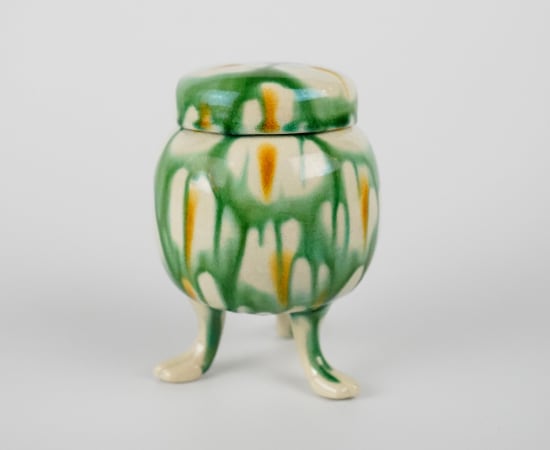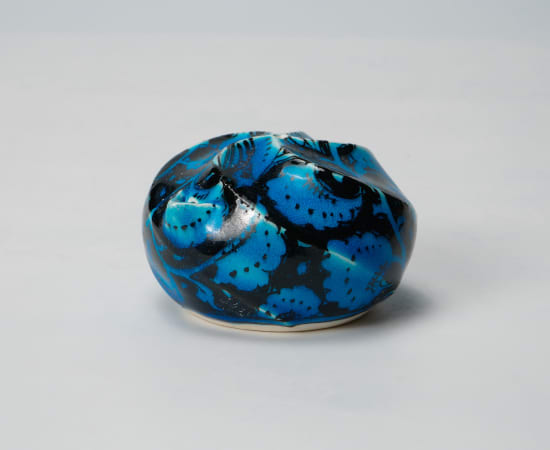Born into a family of pottery masters dating back to the late Edo period, he was first trained in the ceramic arts by his father, Kato Kobei, before going on to study at the Kyoto School of Ceramics. In 1965, he also traveled to Finland to continue his studies. Afterwards, he became fully immersed in the Kyoto pottery scene.
Kato is famous for his historical Persian and Chinese influenced pottery style. His ceramics evoke the interconnected global trade, economy, and cultural transmission of the 8th to 12th centuries. This can be seen in a variety of styles that he produced. For example, he was interested in producing lustreware, a type of pottery bearing a metallic glaze, depicting royal hunting scenes, flora, and fauna. Lustreware was a popular export ceramic type that circulated from Persia to Europe in the 11th century.
Among repertoire, Kato also produced excellent examples of the famous “Sancai” glaze, or “Tri-color” glazes. This glaze type was traded commercially in the silk road trade during the Chinese Tang dynasty, where the style originated from. Among his ceramics, Kato is most famous for his porcelain production, a medium that has a long history of export and trade over lands, seas, and across time. Kato’s commitment to history and revival of medieval pottery styles earned him the designation of a Bearer of Intangible Cultural Heritage in 1995.



